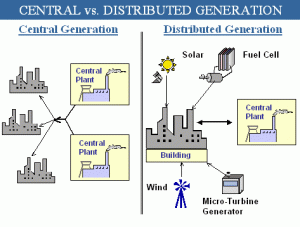Distributed energy grid models increasing globally – Navigant
Deployments of distributed energy resources are challenging existing grid operating models, report finds
BOULDER, Colo. – Power generation from solar, wind, fuel cells, and micro-turbines is increasingly happening off the grid, which can create big headaches for utilities, according to a new report from Navigant Research that analyzes the global market for distributed energy resources technologies, with forecasts for installed capacity and revenue, through 2024.
Distributed energy penetration is increasing globally, causing a significant, and sometimes controversial, impact on the power and utilities sector. The rapid expansion is expected to force a major shift away from the centralized, one-way electrical grid, toward the integration of smaller power sources that can be aggregated to meet regular demand.
“The overarching goal of DER deployments is to integrate these resources effectively in order to make the electricity grid more efficient, resilient, cost-effective, and sustainable,” said Mackinnon Lawrence, senior research director with Navigant Research.
“With global DER capacity deployments expected to outpace centralized generation five-to-one by 2024, there is little doubt that technologies like solar photovoltaics (PV), energy storage, and demand response will force an unprecedented restructuring of grid architecture and utility business models.”
In many markets, distributed energy deployments are challenging incumbent grid operating models, requiring a more dynamic network with advanced communications and orchestration to ensure stability, efficiency, and equality, according to the report.
Given the diversity of available distributed energy technologies and rapidly declining costs, most countries are expected to see more new DER capacity deployed than centralized generation capacity in the coming decade, especially solar PV, generator sets, and energy storage.
The report, Distributed Energy Resources Global Forecast, provides a quantitative analysis of the global market for DER technologies and assesses the key regional market developments and technology trends.
The technologies and solutions covered include distributed solar PV (<1 MW), small and medium wind turbines (<500 kW), microturbines, stationary fuel cells, diesel and natural gas generator sets (<6 MW), distributed energy storage systems, microgrids, electric vehicle (EV) charging, and demand response. Installed capacity and revenue forecasts for 10 leading countries, as well as their respective regions, extend through 2024.
This report also provides a comparison of DER and conventional generation deployments over the next decade.








